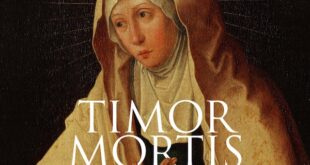As America’s wall between church and state seems in increasing danger of crumbling, a story of a preacher-turned-politician seems right for our times. Composer Gregory Spears‘ new opera, The Righteous, actually takes place in the 1980s, but its message rings true today.
It harks back to ancient times too. With a libretto partially in villanelle form by former U.S. Poet Laureate Tracy K. Smith, The Righteous is a “reconsidering” of the Biblical story of David, set in the American Southwest. The Santa Fe Opera will present its world premiere, opening July 13, 2024.
The opera explores how religious faith intersects with political power. It opens with David, a preacher in the American southwest who is building a church. Marrying into a rich oil family, he’s pushed to run for governor of his state, succeeding his father-in-law Paul. At the same time, his affair with Sheila leads them both to a personal crossroads.

Spears’ recent works have been performed by the Lyric Opera of Chicago, the Cincinnati Opera, the Metropolitan Opera Orchestra, the New York Philharmonic, countertenor Anthony Roth Costanzo, The Crossing, the Virginia Chorale, New York Polyphony, the Bang on a Can Marathon and many more at home and abroad. He spoke with us about the new opera, the cast, the libretto and more.
Castor and Patience, your last collaboration with Tracy K. Smith, dealt with obstacles to Black land ownership in the United States. The Righteous, while also set in the U.S., takes a Biblical story as its starting point. Is this a significant change in direction? Are there some continuities there?
Tracy and I are both interested in history, time, and what is seen and unseen, which are themes that inform both works. Both operas also engage with the paradoxes and tensions that underlie our shared American past.
And while The Righteous has allusive references to Biblical narratives, the starting point was more our shared U.S. history. [As in] Castor and Patience, we were interested in how we Americans see the land and larger forces around us (whether that be history or God), and how they shape our lives and our regard for one another.

What aspect(s) of the Biblical story of David does your story explore, and how does it transpose them to your David, a preacher turned governor in the American Southwest?
Our piece looks at the intersection of leadership and faith, and also at how our characters’ personal relationship with God works in relation to their call to lead a community in service – which are themes that resonate with the story of King David. Our characters’ lives and choices diverge from the paths their Biblical namesakes take, though, resulting in a story all its own. We also leave room to ask which characters in our story have the most King David-like qualities.
Bringing a full-length opera to a full production is a huge undertaking. What has the development process been like?
We’ve been lucky to have the chance to explore the work in a libretto reading, two vocal workshops, and an orchestral workshop. Because of the opera’s scale, and the fact that it’s an original story, these workshops have been essential.
Baritone Michael Mayes plays the lead role, and other well-known singers are in the cast, including the great countertenor Anthony Roth Costanzo, whom you’ve collaborated with several times before. What’s the countertenor role in The Righteous?
Yes, we have a dynamite cast. Anthony Roth Costanzo plays Jonathan, David’s best friend. We find out pretty early he’s in love with David, but that David’s romantic interests are focused on Jonathan’s sister, Michele, played by the epic Jennifer Johnson Cano, and then later on Sheila, played by the wondrous Elena Villalón.
How does Smith’s choice of the villanelle form for the libretto mesh with and/or inspire/influence your composing process?

While the majority of the piece unfolds like a prose play, Tracy uses the villanelle form for key aria-like moments, often when characters are praying. The villanelle is a form that uses repetition, symmetry and a crystal-like form to develop themes of obsession and introspection.
And yet, with all that complexity, villanelles are very moving and also surprisingly fun. It’s a little puzzle of a poetic form.
Editor’s note: The best-known villanelle of modern times is Dylan Thomas’ “Do Not Go Gentle into That Good Night“. In a video discussing the opera, Smith described the form, with its incantatory repetitions, as “a really great form for thinking about obsession…the ways we resolve and then suddenly find we’ve disrupted everything over and over again in the course of a life.”
And as Spears told us, “In the opera, thematic rhymes and recurrences create a larger musical form that help us tap into the paradoxes shaping the journeys of these characters. So repetition and recurrence are also important aspects of how the score works.”
The Santa Fe Opera’s world premiere production of The Righteous runs July 13 – August 13. Visit the website for schedule and tickets.
 Blogcritics The critical lens on today's culture & entertainment
Blogcritics The critical lens on today's culture & entertainment




